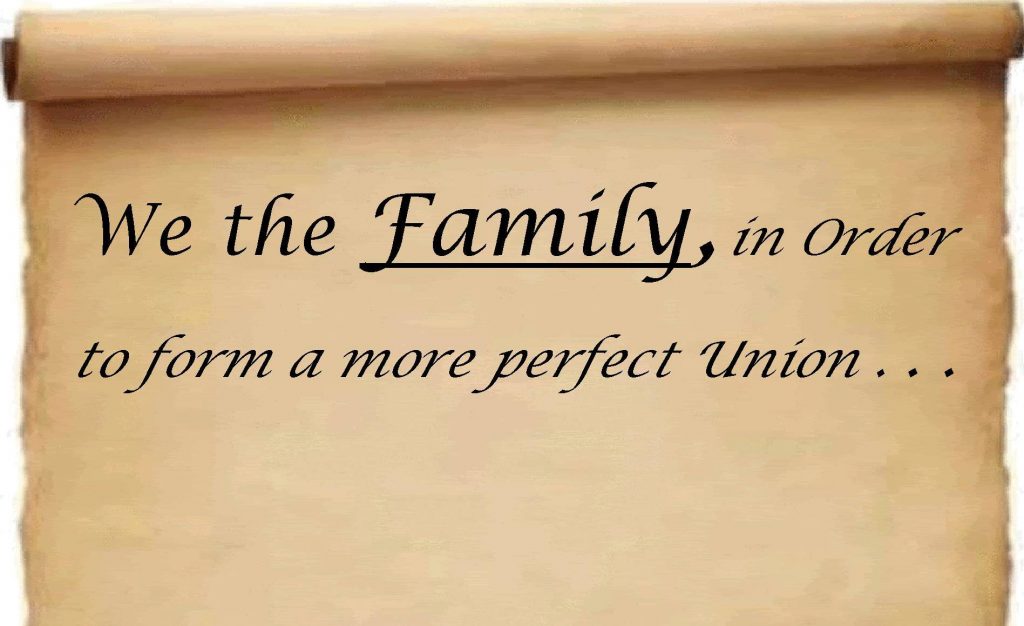“We, the Family”: The Benefits of a Family Constitution

Wealth and family can be a tricky mix. Affluence can help families achieve great things and realize their shared vision, of course. But it also can create resentments and rifts that could potentially damage a family’s financial position and cause estrangement among family members.
What’s more, as wealthy families grow and expand over time, one big issue is keeping them and their shared capital together. Sometimes the wealth remains commingled because of legal structures, such as multigenerational trusts. However, family members who feel wronged in some way may take legal action to try to break such trusts—creating still greater family disharmony and possibly jeopardizing the family’s bottom line.
To avoid these and similar outcomes—and to help build and encourage family harmony—consider creating a formal family constitution. We see many Super Rich (net worth of $500 million or more) families taking this step, with positive results.
Here’s a look at family constitutions: what they are, what they do and how to create one with your own family.
Facilitating family harmony
A family constitution can be an effective tool for dodging serious conflicts and facilitating agreement among family members. It can help family members address their concerns and preferences constructively. Often, family constitutions also lay out the future directions and actions the family intends to take.
One of the key goals of a family constitution is to prevent the types of family conflicts that can tear families apart and diminish fortunes. The goal is to detail how the family will deal with dissent. When the specific methods for managing and dealing with family conflict are well documented and described, a family can potentially be very effective at reducing infighting. The overarching goal is to head off conflicts by promoting communication and striving for consensus among family members around their core principles, values and long-term intent.
Family constitutions recognize that there is contentiousness in nearly all families—and they aim to spell out specific ways a family can effectively address conflicts that are almost certain to arise over time and across generations.
Important: While the family constitution is a written document, it is only a set of guidelines and prescriptions. It is not, in most cases, a legal and binding document that must be adhered to.
CREATING AN EFFECTIVE CONSTITUTION
A family constitution should, among other things, help your family equitably address issues around its wealth—which might include assets such as an operating business and properties (real estate, art) as well as invested wealth and other savings.
Specifically, a constitution should specify:
- How the wealth is to be used by family members
- What limitations there are on how the wealth is spent, invested and donated
- Who makes the decisions and how these decisions are made
- How family members can provide input or impact the decision-making around the distribution and use of the wealth
- How family members are prepared to perpetuate family values and manage the family wealth
In developing a family constitution, it’s necessary to gain consensus among family members. Without broad-based agreements, the family constitution will likely not even be written—and if it is, will very likely be contested. Ideally, a family constitution would be written when family relationships are strong (or at least not strained), making consensus more likely. All parties should be motivated to reach agreements and develop shared solutions.
In general, a family constitution will include three key sections:
- Who is defined as family. As families become larger, sometimes decisions are made specifying who is family and who is not. For example, some families exclude those who marry into the family.
- The ideology of the family. This spells out what the family stands for, including its values and objectives.
- The reasons for staying together. This details the rationale for managing the joint capital and the benefits of maintaining family cohesion. Factors such as love and concern, along with financial considerations, are usually part of this section.
Important: A family constitution must be seen as a living document, not a static “one and done” agreement. It will likely be important to modify the constitution over time as family circumstances evolve.
Getting help
Gaining consensus requires openness and cooperation among family members. To that end, many wealthy families use facilitators to help them work through the relational issues and the emotions that are often attached to the financial issues. We have seen that conversations around the family money can get very intense, as they often overlap with family history and any acrimony that exists. Social and political differences also make conversations around the family money more complicated. A neutral third-party facilitator can help keep tensions at bay and keep family members focused on agendas instead of anger.
An option for many
In general, a well-crafted family constitution will accomplish several objectives:
- Memorialize a family’s principles and values.
- Establish checks and balances among different interests, as well as ways to address conflicts and communication protocols.
- Promote accountability of family members.
- Ensure flexibility so the family can adapt to change.
- Provide disenchanted family members with a viable means of exiting.
Best of all: Even though family constitutions are a strategy often employed by the Super Rich, you don’t need millions of dollars to create one for you and yours.
ACKNOWLEDGMENT:This article was published by the VFO Inner Circle, a global financial concierge group working with affluent individuals and families and is distributed with its permission. Copyright 2020 by AES Nation, LLC.